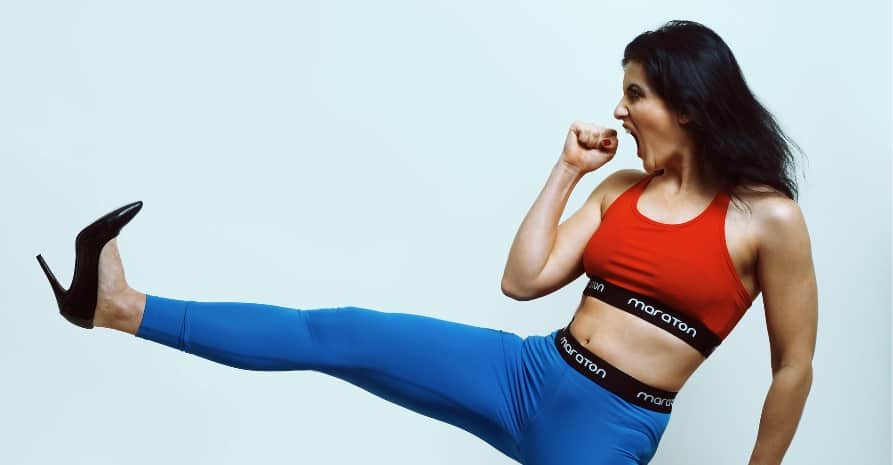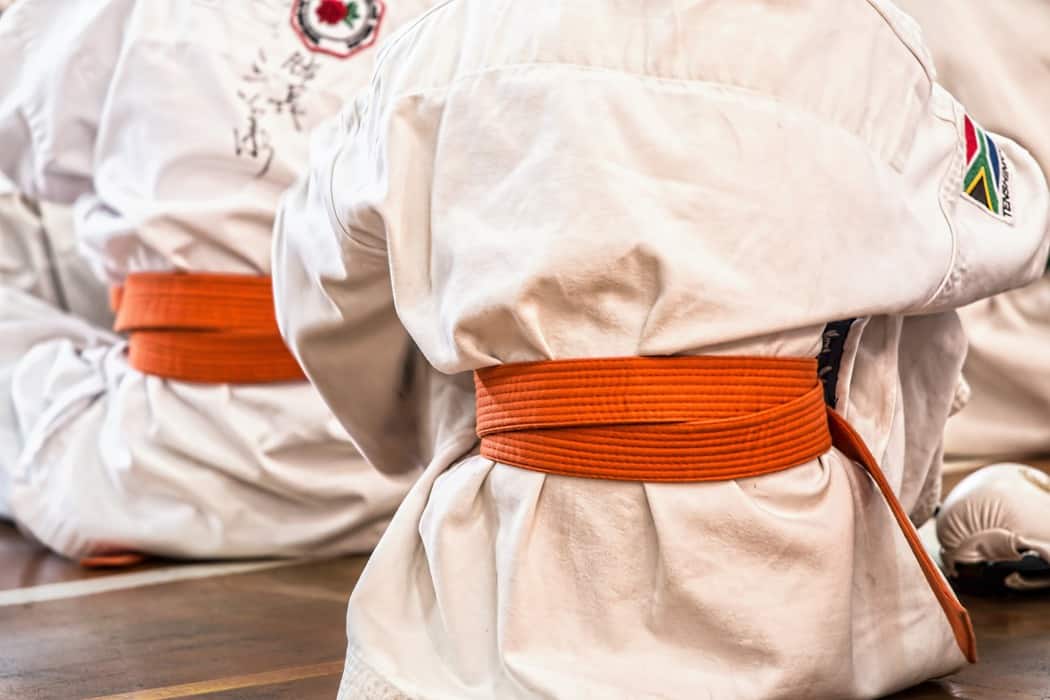
If you’re as fascinated with martial arts as I am, chances are that you often wonder how the arts stack up against each other. One thing I like to take a look at is just how effective each martial art is in terms of self-defense or in a real-life confrontation. Karate is next on my list!
Karate can be effective and good for both self-defense and a real-life fighting situation with its equal drawbacks ie. Single karate techniques as well as the low stances and rigid footwork, which allows for quick and flexible movement, can be fairly effective in a real fight or for self-defense. However, Karate used alone and following the strict rules of the martial art (no illegal strikes), probably wouldn’t be the most effective fighting or self-defense option.
It is interesting that karate can be effective if you are willing to improvise in the moment. Karate, just like other martial arts, has various rules in place that stop practitioners from striking in an illegal way or in “illegal” spots.
Do Karate Classes Actually Teach Self-Defense?
It is interesting to note that karate was not originally designed for sport fighting. Instead, it was designed for personal protection and self-defense. Karate when taught as a martial art focuses on teaching self-discipline and developing mental strength.
When correctly taught, it also prepares practitioners for combat methods. If you aren’t taught how to use the various techniques for combat and self-protection, you might fail to use it effectively.
Something that must be said is that there is a considerable difference between studying an all-encompassing martial art and learning street-fighting self-defense techniques.
If you want to ensure that you can use karate in self-defense, it is best to check with your instructor that this will actually be taught.
How To Apply Karate For Self-Defense?
If you are considering karate as a martial art and self-defense technique, you might wonder if you will be able to protect yourself and those you love, if a real attacker should strike. Just how effective your karate skills will be in a real-life self-defense situation depends on a number of factors.
To use karate for self-defense, you must be trained in a variety of situations that must be tested. The best way to test skills is to practice with a resisting and 100% uncooperative training partner.
In order to apply karate effectively as a self-defense mechanism, practitioners should learn how to react to an attacker with a weapon.
Sparring
You should also ensure that you participate in live sparring as this sharpens your senses and reactions and results in you being quick on your feet in a street fight. Sparring will also ensure that you become accustomed to striking a target that moves and responding to movements and reactions that aren’t expected or anticipated.
Simulate Real-Life Fighting
Another way to ensure you can apply karate for self-defense is that you need to practice with a resisting parting. Put yourself up against a partner who also wants to win and put his fighting techniques to the best possible use.
This way, your skills will improve and you will learn how to be reactive in a fight in a way that is beneficial to you.
Add Grappling
If you want to use karate effectively in a real street fight, you should start learning and practicing traditional grappling now! Unfortunately, modern karate classes tend to focus more on striking, but if you research the traditional Okinawan style of karate, you will see that grappling was a major focus. Practitioners would learn various grappling techniques such as throwing, joint locking, and grabbing.
Learning ground grappling is also a good way to ensure that your karate techniques are effective in self-defense, especially for women. If you think about it, most attacks end up on the ground. If you are tripped, thrown to the ground, or fall, you will end up on the ground and this is where basic ground grappling techniques can really help you.
Know a few ways to throw your attacker and get back onto your feet!
You don’t need to become a grappling pro, but just know a few basic moves so that you can protect yourself, should you end up on the ground.
Practice and learn from the katas if you want to truly get the most out of the martial arts techniques.
By the way, Katas are choreographed moves within the karate martial art. These movements contain a plethora of grappling, choking, throwing, and joint locking techniques that are brutally effective. Many people overlook the effectiveness of studying katas.
How Long Does It Take To Learn or Master Karate?
As an aspiring student of new martial art, you might want to know how long it will take you to master the art. When most students start practicing karate, they will find that they become comfortable with the basics within the first 6 to 12 months.
To reach Black Belt, however, a student will need to train for between 3 to 5 years.
Of course, as with anything in life, how good you become and how quickly you master the art will also depend on how often you train, how hard you train, and your own abilities. If you are fit and have previous martial art training, you might reach your goals a lot quicker.
Mastering karate is something that can take several years. Not many people progress to the level of a Master.

How Many Levels Or Belts Are There In Karate?
Something that we all know about karate is that it is an ancient art with a rich history. Practitioners have been learning and practicing karate for centuries. The belt or grading system, which is the kyu/dan system, is only something that has been used to measure progress since the start of the 20th Century.
If you are familiar with Judo, you will know that modern karate actually uses the Judo kyu/dan belt system. When a student achieves Black Belt status, he/she is considered competent in the art, but not a Master of the art. For Masters, achieving a Black Belt is only the start of their journey to becoming a verified Master.
With schools popping up all over the world in different countries, it is important to know that there are various belt colors and styles to consider. Not all of them are the same, but the most common belt colors used by Karate skills are white, yellow, orange, green, blue, brown, and black.
You can expect to see the following in the belt ranking system.
Kyu Belt Levels
Kyu ranks are considered students ranks and are representative of the early learning stages. During these learning years, practitioners are called “Mudansha”.
Progress is noted numerically downwards through each of the Kyu grades. This means that the 1st Kyu is actually the highest rank for a student and is usually represented by the brown belt. Let’s take a look at the rest of the belt colors.
- White belt – 6th Kyu
White belt students must train in this level for at least 3 months before moving to the next level. The white symbolizes the starting point – purity. It’s the very beginning of learning to control both body and mind.
- Yellow belt – 5th Kyu
Yellow belt students must actively train in the 5th Kyu for 6 months before moving to the next level. This is the level in which students are taught the basic principles of karate and actually start to understand them.
- Orange belt – 4th Kyu
Orange belt students must actively train in the 4th Kyu for 6 months before moving to the next level. This belt is only awarded to students who show understanding of the basic skills and show the ability to effectively apply the various principles of distance management.
- Green Belt – 3rd Kyu
Green belt students must actively train in the green belt level for 9 months before they can move on to the next level. At this level, students begin refining learned skills. At this level, students also learn to apply principles and techniques to protect themselves. At this level, students are taught how to monitor the actions and reactions of an attacker/opponent.
- Blue Belt – 2nd Kyu
Students in the Blue belt level must actively train in this level for 12 months before they can move on to the next level. It is the Blue belt students who are more significantly in control of body and mind. In the Blue level, students learn to spar with confident authority over opponents and become more adept in applying self-defense techniques.
- Brown Belt – 1st Kyu
Brown belt students must actively train in this level for 18 months before moving to the next level. The Brown belt level is the last Kyu level and students in this level have exceptional control over techniques. Brown belt students are highly skilled in self-defense and are effective in combat situations.
Dan Levels
After these levels, students can choose to continue training the Dan levels. Dan students are called “Yudansha”. The Dan levels are all Black belts and there are 10 levels to work through. Dan belts are as follows:
- 1st Dan – Shodan – student with good skills.
- 2nd Dan – Nidan – student with fine skills.
- 3rd Dan – Sandan – student with proficient skills and has mastered the basics.
- 4th Dan – Yondan – student with excellent skills and can apply the basic principles.
- 5th Dan – Godan – student with outstanding skills and has mastered the basics and applications.
- 6th Dan – Rokudan – student with superb skills and a deeper understanding of karate.
- 7th Dan – Nanadan – student with top-level skills who has mastered an understanding of karate.
- 8th Dan – Hachidan – student well acquainted with karate and mature in skills and application.
- 9th Dan & 10th Dan – students who have been awarded, honorary Masters.
Karate Fundamentals & Techniques
Karate is based on several basic fundamentals, techniques, and principles. These include teaching students how to master stances, strikes, punches, kicks, and blocks. All of these techniques are effective in self-defense scenarios.
Karate doesn’t have a list of endless movements. Instead, the art consists of a few moves and techniques that are highly effective.
All karate moves, even the most complicated ones, are built on the basic karate moves you will learn in the first months of training. It’s important to note these moves and perfect them from early on – that’s how to ensure that the fundamentals become highly effective in your training and if you ever need to use them for self-defense.
The Actual Karate Background
What is the actual background of karate?
If you do a bit of research on the history of karate, you will find that its exact originals and background can be a little hazy. The first concrete history we have is when karate appeared in Okinawa.
There are some theories that karate came from India, thousands of years ago. It was brought into China by a Buddhist Monk called Bodhidarma. Of course, this is just one theory and causes many heated debates to crop up among karate practitioners.
Minimal Gear To Get Started With Karate
What gear, clothing, and equipment do you need to get started with learning karate? What do you wear and take along with you to your first class?
In the first class, you won’t be wearing a uniform, so wear comfortable close. Also, take a bottle of water and a towel along with you.
You are bound to be exhausted!
Sweatpants and a t-shirt should do fine. You must be able to move quickly in your chosen clothing.
Beginners often use a mouth guard and a groin protector. The school that you are training with should be able to provide you with padded sparring gear and all other equipment required.
Conclusion
If you take the time to learn each of the techniques and moves of karate carefully, you will soon become aware of how to use those techniques to your advantage in a combat situation. Is karate effective in a real fight? Yes, if you know how to use it, it can be highly effective.

